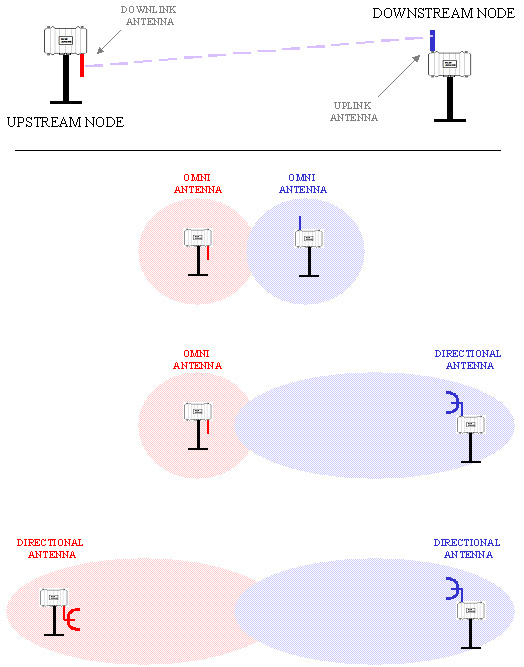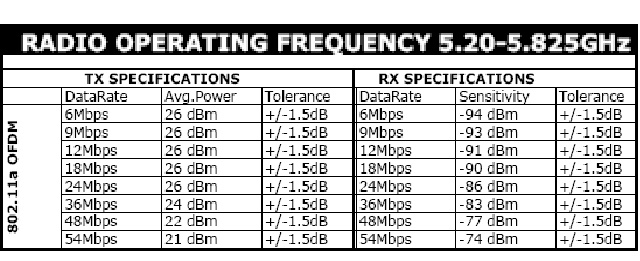|
||

    
  Range is dependant on antenna gain, radio transmit power, radio receive sensitivity, obstructions, RF interference in the environment. It is also dependant on the data rate sought - the range is significantly more at 6 Mbps than 20 Mbps data rates. Range also depends on whether a 5GHz backhaul or 2.4GHz backhaul is used. At a throughput of 20-22 Mbps TCP/IP, with 5GHz radios and 8 dB antennas 400-500 m range is commonplace. 14 miles has been achieved with specialized antennas. Node to Node range between mesh nodes varies significantly. It depends on the specifics of the application. If a backhaul radio needs to be able to communicate in all directions - such as a root node with a single downlink radio surrounded on all sides by relay child nodes. In that case, an omni-directional antenna is the only option available. Omni-directional antenna have relatively low gain compared to focused beam sector or panel antennas. Often the "upstream" nodes to which a relay node connects are in the same general direction. This allows the use of sector or directional antennas on the uplink radio of the relay node in question. Directional antennas have a higher gain than omni-directional antennas. The increased link budget allows for greater node to node distance. This same principle applies to the downlink radio of an upstream node. If the downstream nodes with are in the same general direction of a node then a directional antenna can be used on its downlink radio. This increases the link budget further (below).  Range is also dependent upon the connection rate of the radio link. For a RF connectivity of 54 Mbps (raw), nodes need to be placed closer together than for a connectivity of 6 Mbps. The table below is the performance characteristics of a 5GHz radio card. The radio card transmitting at 54 Mbps will output 21 dBm of power. However, at 6 Mbps data rates, the power output increases to 26 dBm or almost quadruple the power. 5 dBm added to the link budget enables more range (at the cost of data rate loss) 
Note also that the receiver in the radio card needs to "hear" a transmitted signal at a minimum of -74 dBm in order to accept a data rate of 54 Mbps. But the card accepts a data rate of 6 Mbps, with a much lower -94 dBm signal. Node-to-node distance varies significantly while still maintaining a "good" connection at different data rates. Range Calculations: A range estimation worksheet is provided for estimating ranges for different antenna gains and usage conditions. Numerous Online RF link budget calculators exist. for example: https://www.pasternack.com/t-calculator-link-budget.aspx |
||